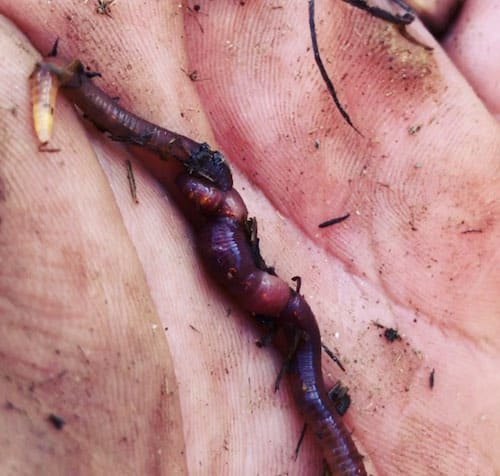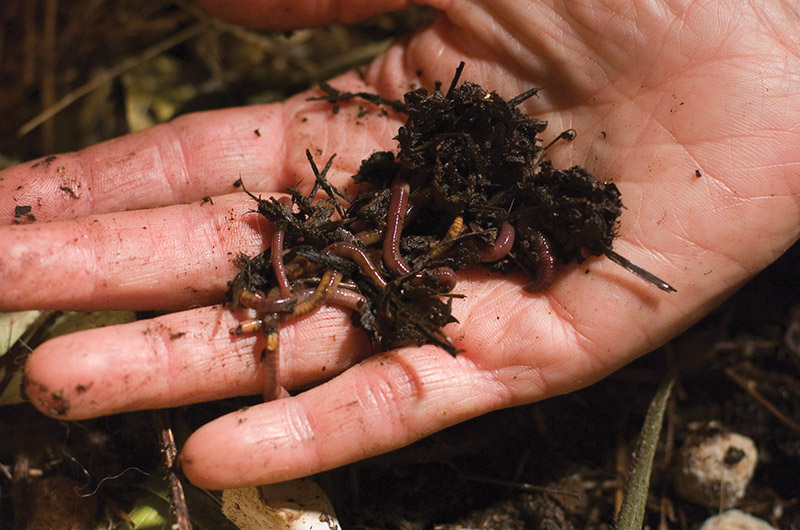Red Wiggler Worms Demystified: Unlocking the Keys of Vermiculture for Greener Living and Nutrient-Rich Soil
In the realm of lasting techniques for improving soil top quality and promoting eco-conscious living, red wiggler worms play a critical yet usually neglected duty. These humble creatures possess the exceptional capacity to transform organic waste right into nutrient-rich spreadings that act as a powerful all-natural plant food. By diving into the world of vermiculture, one can uncover a plethora of benefits that extend far beyond conventional composting techniques. Comprehending the ins and outs of caring for these worms, optimizing their environment, and harnessing their castings can result in a greener lifestyle and healthier soil for plants to thrive.
The Role of Red Wiggler Worms
Red Wiggler worms play a vital role in composting systems by effectively breaking down raw material into nutrient-rich castings. These starved eaters take in a variety of natural products, such as kitchen scraps, yard waste, and paper items. As they feed, the worms' digestion processes damage down the raw material right into a fine, dark, and nutrient-dense product recognized as worm castings or vermicompost.
The spreadings created by Red Wiggler worms are highly advantageous for dirt health and wellness and plant growth. They are rich in important nutrients like potassium, phosphorus, and nitrogen, which are crucial for supporting healthy plant growth. In addition, worm castings contain helpful microbes and enzymes that assist boost soil structure, increase water retention, and improve nutrient uptake by plants.
Advantages of Vermicomposting

Furthermore, vermicompost, the nutrient-rich final result of vermicomposting, functions as a superb natural fertilizer and dirt conditioner. It boosts soil framework, enhances dirt aeration, and raises soil moisture retention. These residential or commercial properties add to much healthier plants with stronger origin systems and far better resistance to illness and pests. Vermicompost additionally enriches the soil with essential nutrients like nitrogen, potassium, and phosphorus, promoting plant development and overall soil fertility.
Furthermore, vermicomposting assistances lasting gardening methods by providing a chemical-free and all-natural choice to synthetic fertilizers. Red Wiggler Worms. This eco-friendly method not just improves the soil however additionally assists minimize dependence on damaging chemicals, advertising a greener and extra sustainable method of horticulture
Establishing a Worm Container
When developing a worm bin for vermicomposting, correct setup is important to ensure the success of the composting process. The initial step in establishing up a worm container is selecting a suitable container. This can be a plastic bin or wooden box that provides enough area for the worms to walk around and has appropriate drain holes to protect against waterlogging. Next off, a bed linens product such as shredded paper, cardboard, or coconut coir must be included in the container. This bed linens offers a comfortable atmosphere for the worms and helps preserve dampness degrees.
After adding the bed linen, introduce the red wiggler worms to the bin. The worms need to after that be provided with food scraps such as fruit and veggie peels, coffee grounds, and eggshells.
Routinely check the moisture degrees and temperature in the worm bin to ensure ideal conditions for the worms. With appropriate setup description and maintenance, the worm bin will efficiently transform organic waste into nutrient-rich garden compost for your plants and yard.
Collecting Worm Spreadings
To efficiently collect nutrient-rich worm castings from your vermicomposting system, a systematic harvesting approach is vital. There are a couple of key steps to follow to ensure an effective procedure when it comes time to harvest the worm castings. First of all, quit including fresh food scraps away of the worm container for a pair of weeks prior to harvesting. This encourages the worms to move to the side with fresh bed linens and food, making it less complicated to scoop out the spreadings from the opposite.

Troubleshooting Common Issues
Identifying and addressing typical discover this difficulties that might occur throughout the vermicomposting procedure is critical for maintaining a healthy and efficient worm container. One typical issue that vermicomposters experience is overfeeding. Including excess food scraps can lead to a buildup of moisture and level of acidity in the worm container, possibly damaging the worms. To prevent this, feed the worms in small amounts, ensuring that the food scraps are adequately broken down before including extra. An additional problem is undesirable smells originating from the worm container. Foul scents suggest anaerobic problems, typically triggered by overwatering or inadequate ventilation. To remedy this, change the dampness levels by adding dry bedding materials like shredded paper or cardboard and increase aeration by turning the bedding regularly.
Additionally, if the worm populace is decreasing or the worms appear undesirable, it can be as a result of ecological stressors such as extreme their website temperatures or pH degrees. Monitoring these elements and making required adjustments is necessary for the well-being of the worms. By repairing these common issues without delay, vermicomposters can ensure a smooth and successful vermicomposting procedure while keeping a thriving worm populace.

Verdict
In verdict, red wiggler worms play a crucial role in vermiculture by damaging down organic matter right into nutrient-rich soil. Setting up a worm container is important for successful vermiculture, and collecting worm spreadings offers valuable compost for gardening.
As they feed, the worms' gastrointestinal processes break down the natural matter right into a fine, dark, and nutrient-dense material recognized as worm spreadings or vermicompost.
The castings generated by Red Wiggler worms are highly advantageous for dirt health and wellness and plant growth. Adding excess food scraps can lead to a buildup of dampness and acidity in the worm container, possibly hurting the worms.Furthermore, if the worm population is declining or the worms show up harmful, it might be due to environmental stressors such as extreme temperature levels or pH degrees. Establishing up a worm bin is important for successful vermiculture, and collecting worm spreadings offers valuable garden compost for gardening.